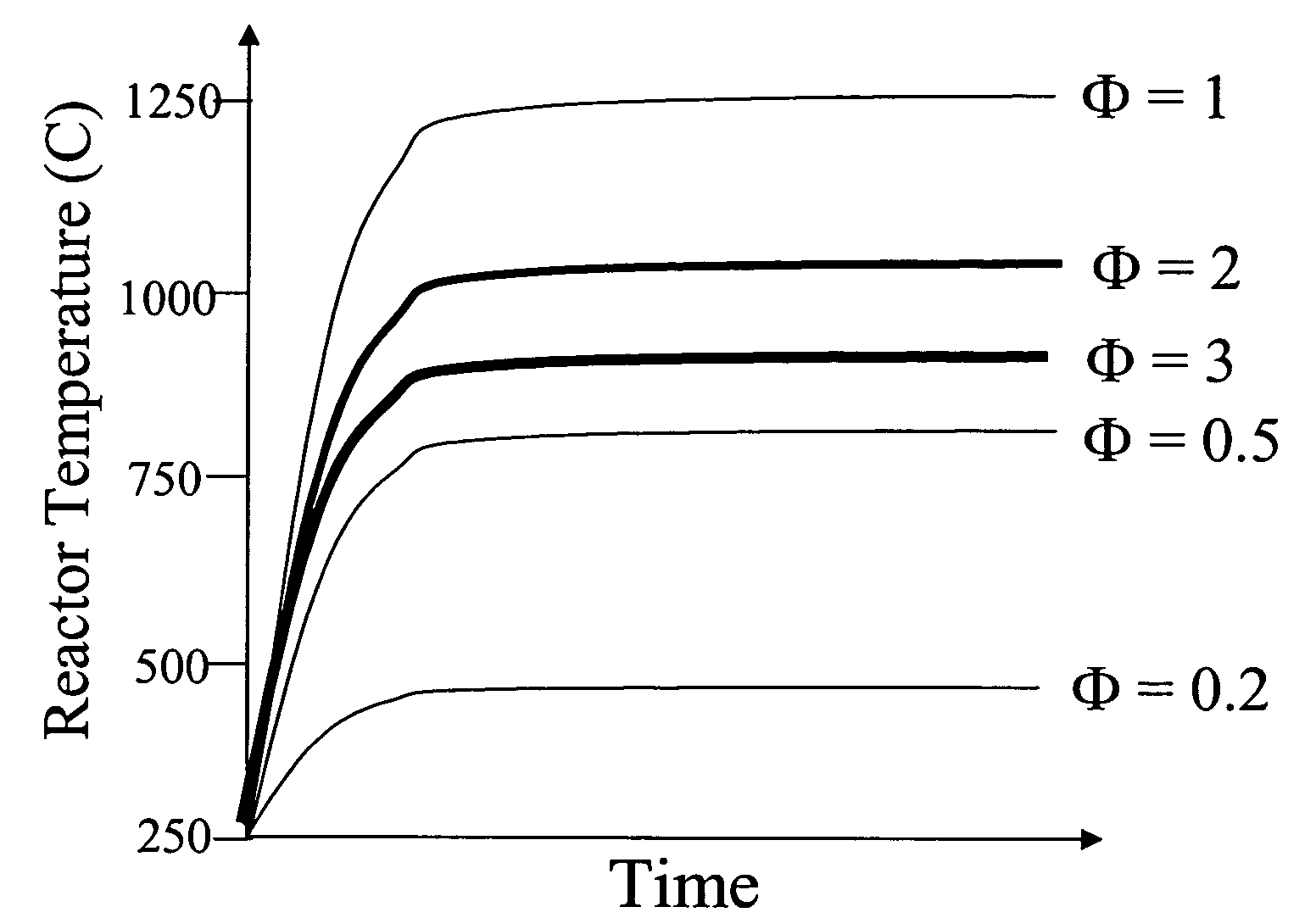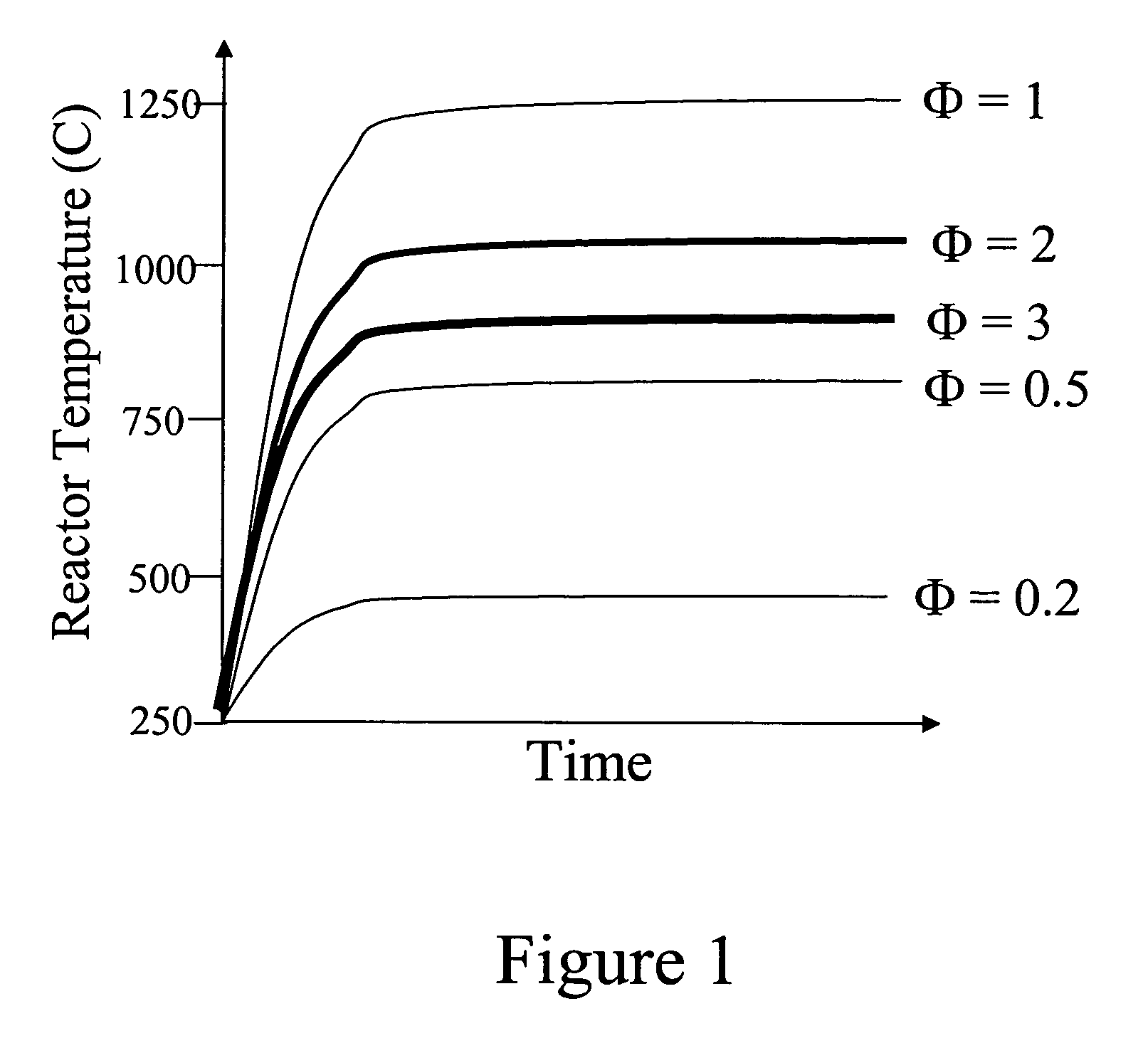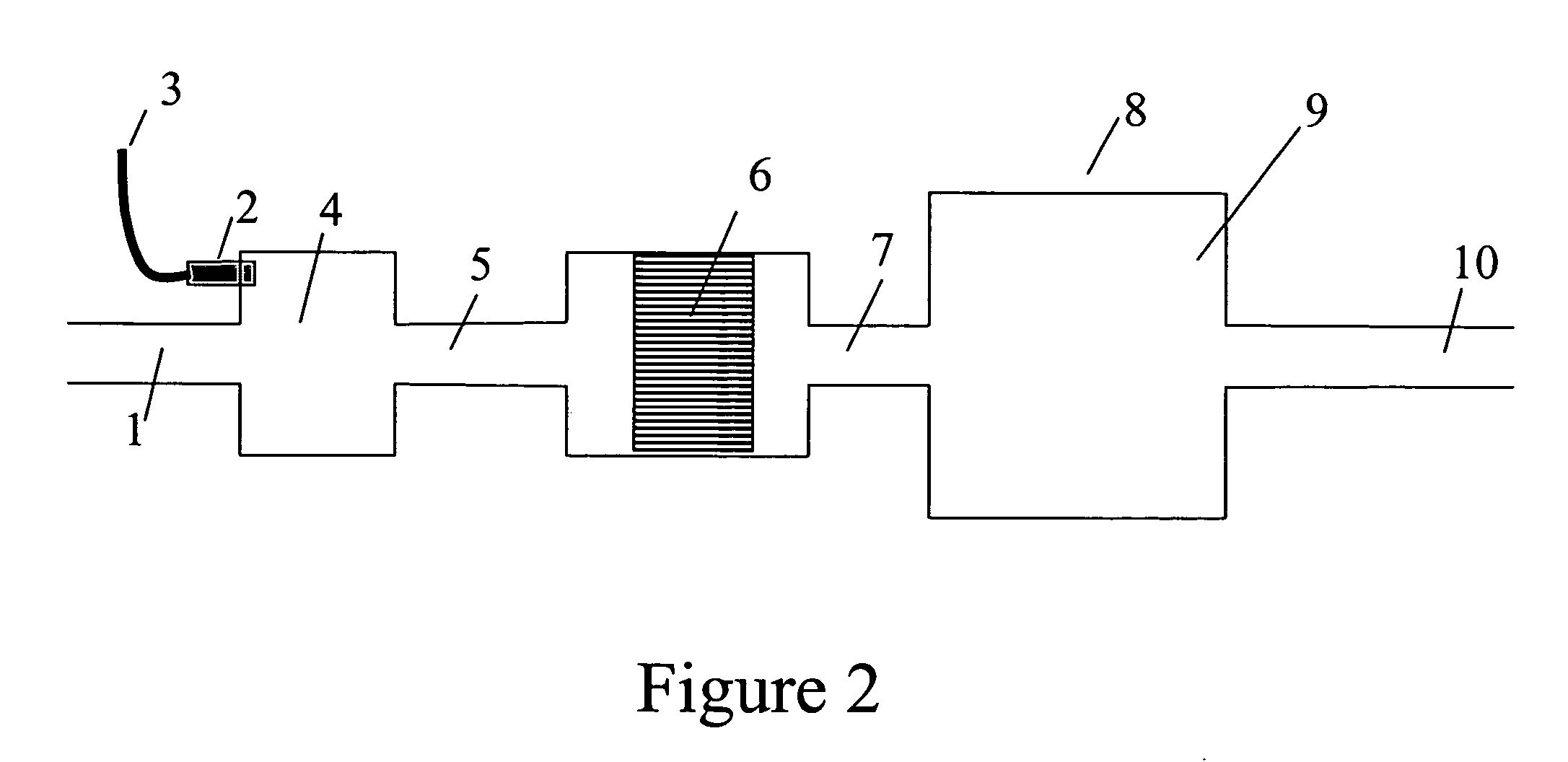Devices and methods for reduction of NOx emissions from lean burn engines
a technology of lean burn engine and nox emission reduction, which is applied in the direction of combustion gas production, machines/engines, mechanical equipment, etc., can solve the problems of incompatible lean-burn engine, three-way catalyst technology is not applicable to lean-burn engine, engines or compression ignition engines with very high emissions, etc., and achieves the effect of reducing nox emissions
- Summary
- Abstract
- Description
- Claims
- Application Information
AI Technical Summary
Benefits of technology
Problems solved by technology
Method used
Image
Examples
example 1
Catalyst Preparation
[0130]A monolithic structure was prepared as described in U.S. Pat. 5,259,754.
[0131]Palladium nitrate was diluted in deionized water at a concentration of about 0.18 g Pd / ml and then zirconium oxide powder having a surface area of about 75 m2 / g was added with stirring. The mixture was then evaporated to dryness and the resulting powder calcined in air at 700° C. for 10 hours. The final palladium concentration in the final catalyst powder was 5.5% by weight. The Pd / ZrO2 catalyst was slurried with water and 10% by weight of a 20% zirconium acetate solution to form a slurry of about 30% solids. The Pd concentration in the solid oxide was 5%.
[0132]Rhodium trichloride was dissolved in deionized water at a concentration of about 0.04 g Rh / ml and then zirconium oxide powder with a surface area of about 75 m2 / g was added with stirring. While stirring the mixture, a solution of 20% ammonium hydroxide in water was added to a pH of 8. the mixture was then evaporated to dryn...
example 2
Catalytic Conversion of Fuel Injected at Varying Frequencies to H2
[0134]The catalyst from Example 1 was placed in a flow reactor containing a gas supply and mass flowmeters for air, N2 and He as a mass spectrometer quantitative tracer, an electric heater, an air assist sprayer for water, and a pressurized fuel sprayer for diesel fuel injection (Mitsubishi MR560553). The catalyst was located in a 50 mm diameter insulated section with thermocouple temperature sensors upstream and downstream of the catalyst. A sampling probe for a mass spectrometer was located about 50 cm downstream of the catalyst outlet.
[0135]The flow of air, nitrogen, and water was adjusted to a total gas flow rate of 600 SLPM, forming a final composition of 5% H2O, 7% O2 , 0.3% He, and the balance N2. This mixture was then heated to 270° C. using the electric heater. Diesel fuel was injected in pulses of varying frequency, as shown in FIG. 6. The mass spectrometer sampling rate was 2 Hz, and the injection frequenc...
example 3
Effect of Mixing to Provide a Continuous Stream of H2 and CO
[0136]An experiment similar to Example 2 was performed, but using 22 g catalyst with an 8 mm channel foil height, at a flow rate of 350 SLPM. Fuel pulses were at 0.5 Hz. After exiting the fuel processor catalyst, the resulting gas stream then entered a 38 liter stainless steel mixing chamber, to mix the resulting products. A mass spectrometer was used to follow the composition of the gas stream just downstream of the fuel processor, equivalent to location 7 in FIG. 2 and just downstream of the mixing volume, equivalent to location 10 in FIG. 2. The H2 concentration just downstream of the fuel processor is shown in FIG. 7A and the H2 concentration downstream of the mixing volume is shown in FIG. 7B. These data show that such a mixing volume is sufficient to mix out the pulsing H2 and provide a stream of gas with a relatively constant level of H2. It should be noted that CO was not monitored in these tests but the CO concentr...
PUM
 Login to View More
Login to View More Abstract
Description
Claims
Application Information
 Login to View More
Login to View More - R&D
- Intellectual Property
- Life Sciences
- Materials
- Tech Scout
- Unparalleled Data Quality
- Higher Quality Content
- 60% Fewer Hallucinations
Browse by: Latest US Patents, China's latest patents, Technical Efficacy Thesaurus, Application Domain, Technology Topic, Popular Technical Reports.
© 2025 PatSnap. All rights reserved.Legal|Privacy policy|Modern Slavery Act Transparency Statement|Sitemap|About US| Contact US: help@patsnap.com



